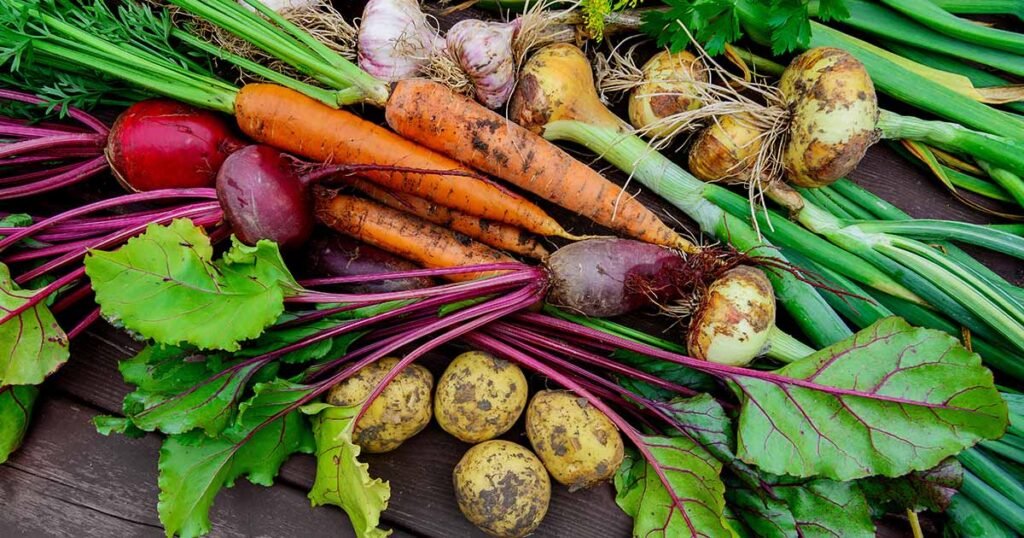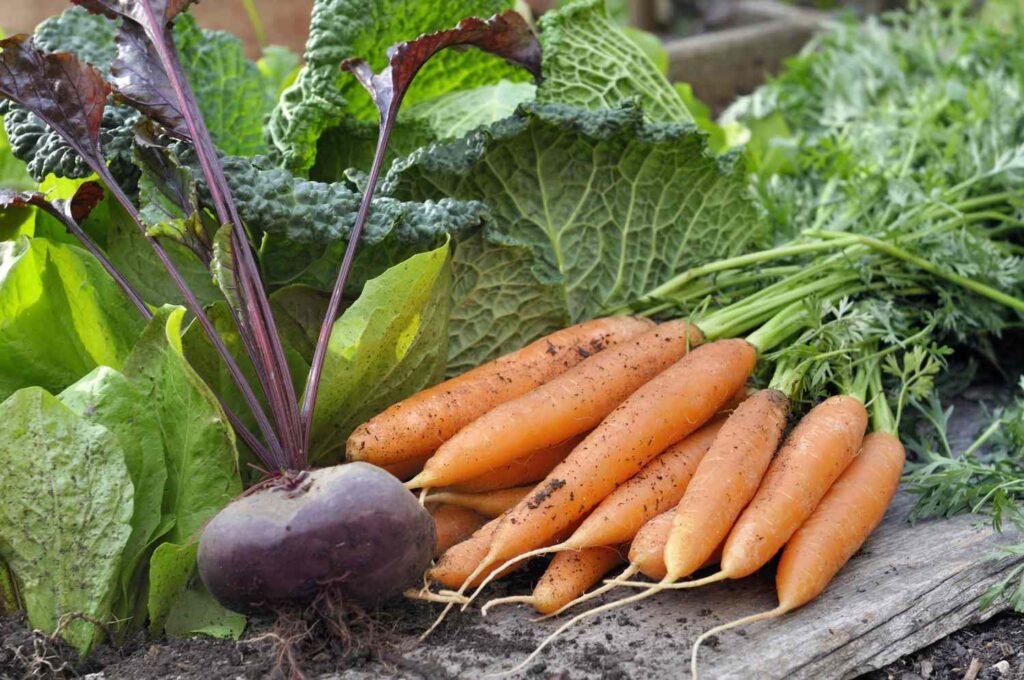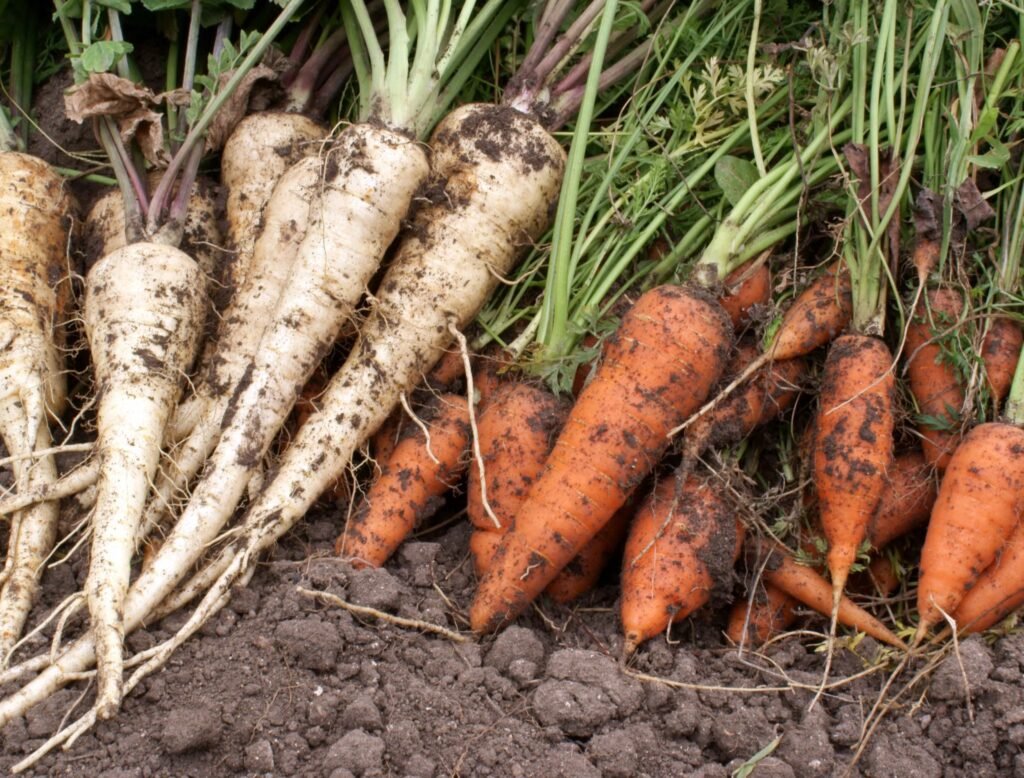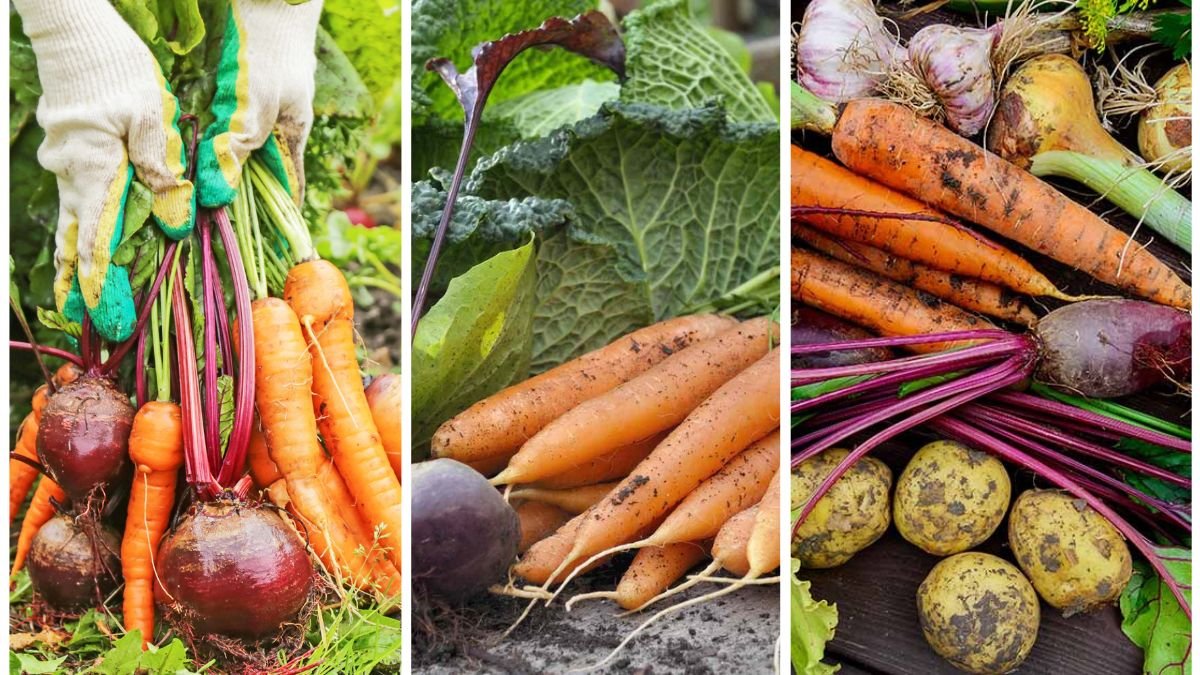When most people think of frost, they imagine the end of the growing season: shriveled tomato vines, blackened basil leaves, and fading flowers. But not all plants fear the cold. In fact, some fall crops actually thrive when temperatures dip and frost dusts the garden. These hardy vegetables not only survive the chill but also transform in flavor—developing sweeter, richer tastes that delight gardeners and food lovers alike.
Why does this happen? When frost touches the leaves, stems, or roots of certain plants, they respond by converting stored starches into sugars. This natural defense mechanism prevents ice crystals from damaging their cells, but it also gives us an added bonus: sweeter, more delicious vegetables.
Let’s dive into five fall crops that taste better after frost, why they change, and how you can grow and enjoy them for maximum flavor.
1. Kale

Kale, often crowned the king of superfoods, is a powerhouse green that becomes even more appealing once frost arrives.
Why It Tastes Better After Frost
When exposed to cold, kale’s starches break down into sugars, softening its sometimes bitter, earthy flavor. A touch of frost transforms tough leaves into sweet, tender greens that are perfect for raw salads, sautés, or soups.
Growing Tips
- Planting Time: Sow kale in mid to late summer for fall harvests. It thrives as temperatures drop.
- Hardiness: Kale can survive temperatures as low as 20°F (-6°C), and many varieties taste their best after repeated frosts.
- Care: Provide consistent moisture and harvest outer leaves regularly to encourage new growth.
Best Varieties for Sweetness
- Winterbor: Curly, frost-resistant, and sweet.
- Red Russian: Tender leaves with a milder flavor after frost.
How to Enjoy
Harvest kale after a frost and toss it into hearty fall salads with apples and nuts, or bake into crispy kale chips for a sweet-savory snack.
2. Carrots

Carrots are one of the most rewarding root crops to grow into the colder months because they turn incredibly sweet once the weather cools.
Why They Taste Better After Frost
Cold weather signals carrots to convert starch into sugar as a survival mechanism. The result? Crisp, candy-sweet roots that often taste better than summer carrots.
Growing Tips
- Planting Time: Sow carrots in late July through early September for a late fall harvest.
- Hardiness: Carrots tolerate frosts down to about 20°F (-6°C). In fact, leaving them in the ground under mulch makes them sweeter.
- Care: Keep soil evenly moist and mulch heavily once frost arrives to prevent the ground from freezing solid.
Best Varieties for Sweetness
- Nantes: Famous for sweetness and crispness.
- Danvers: Classic, versatile, and reliable in fall gardens.
How to Enjoy
Frost-sweetened carrots are perfect for roasting with herbs, blending into creamy soups, or snacking raw straight from the garden.
3. Brussels Sprouts

Brussels sprouts, once unfairly dismissed as bitter, become tender, nutty, and sweet when kissed by frost.
Why They Taste Better After Frost
Like other brassicas, Brussels sprouts shift starch into sugars to protect themselves from freezing. This sugar boost balances their earthy taste and reduces bitterness.
Growing Tips
- Planting Time: Start seeds in early summer and transplant seedlings by mid-July for fall harvests.
- Hardiness: Sprouts can withstand several frosts and improve in taste after exposure to temperatures in the low 30s (°F).
- Care: Harvest sprouts from the bottom up once they reach 1–2 inches in diameter. Leave plants in the garden into November for peak sweetness.
Best Varieties for Sweetness
- Diablo: Uniform sprouts with excellent cold tolerance.
- Long Island Improved: Classic heirloom with rich flavor.
How to Enjoy
Roast Brussels sprouts with olive oil and balsamic glaze to bring out their caramelized sweetness, or sauté with bacon and garlic for a hearty side dish.
4. Parsnips

Parsnips may look like pale carrots, but their flavor is uniquely nutty and sweet—especially after frost.
Why They Taste Better After Frost
Parsnips need cold weather to reach their full potential. Frost triggers starch conversion to sugars, giving parsnips a depth of flavor that’s unmatched in warm-season harvests.
Growing Tips
- Planting Time: Sow parsnip seeds in early spring for fall harvests. They require a long growing season (100–120 days).
- Hardiness: Extremely frost-tolerant and can be left in the ground well into winter, protected by mulch.
- Care: Be patient—parsnips germinate slowly and need consistent moisture.
Best Varieties for Sweetness
- Hollow Crown: Traditional variety known for excellent flavor.
- Gladiator: Hybrid with smooth roots and strong cold resistance.
How to Enjoy
Roast parsnips alongside carrots and potatoes for a sweet, caramelized medley, or mash them with butter for a flavorful twist on mashed potatoes.
5. Cabbage

Cabbage is another frost-loving brassica that benefits from the cold, becoming crisp and sweet in late fall.
Why It Tastes Better After Frost
Frost reduces bitterness in cabbage leaves, enhancing sweetness and crunch. This makes late-season cabbage perfect for both raw and cooked dishes.
Growing Tips
- Planting Time: Sow seeds in mid-summer and transplant seedlings by late July or August.
- Hardiness: Cabbage can survive frosts as low as 20°F (-6°C). Heads harvested after light frost are especially flavorful.
- Care: Provide rich soil and consistent watering. Harvest when heads are firm and solid.
Best Varieties for Sweetness
- January King: Hardy and flavorful, ideal for late harvests.
- Savoy Cabbage: Crinkly leaves with a naturally sweet flavor enhanced by frost.
How to Enjoy
Slice frost-sweetened cabbage into slaws, ferment into sauerkraut, or braise with onions and vinegar for a comforting fall dish.
The Science Behind Frost-Sweetened Vegetables
When frost threatens plant tissues, vegetables defend themselves by producing sugars that act like antifreeze. These sugars lower the freezing point of water in plant cells, preventing damage. For gardeners, this adaptation translates into improved flavor and sweeter harvests.
This phenomenon is particularly strong in brassicas (kale, cabbage, Brussels sprouts) and root vegetables (carrots, parsnips)—all of which not only tolerate frost but actually use it to improve taste.
Tips for Maximizing Flavor
- Time Plantings Carefully: Sow crops late enough to mature in cool weather but early enough to avoid hard freezes before harvest.
- Leave Crops in the Ground: Don’t rush to harvest after frost—many crops continue improving in flavor as cold weather persists.
- Use Mulch: Protect roots with straw or leaves to extend harvest time into late fall and early winter.
- Taste Test: Sample kale or carrots before and after frost—you’ll notice the difference immediately.
Final Thoughts
Frost doesn’t have to mark the end of your garden season. For certain crops, it’s the beginning of their most flavorful stage. Kale, carrots, Brussels sprouts, parsnips, and cabbage are five vegetables that prove gardening in the cold is worth the effort. Not only do they withstand the chill, but they also reward you with sweeter, richer harvests that are perfect for comforting fall and winter meals.
So instead of dreading those frosty mornings, embrace them. With the right crops in your garden, the first frost isn’t the end—it’s the secret ingredient to better flavor.
